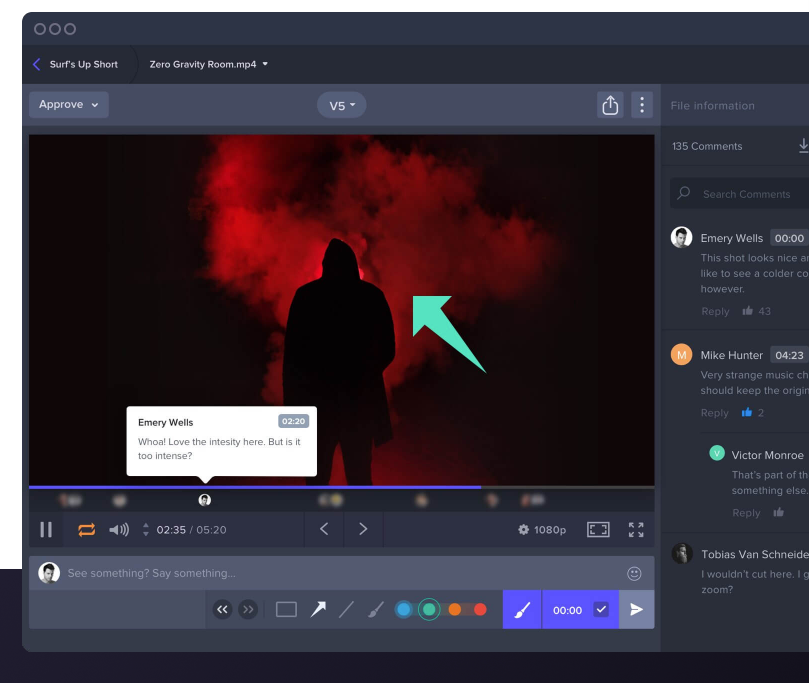

I mean, we’re always going to have email, but you really don’t have to use anything else. I think the power of Frame.io is that we’re tackling the whole problem. There are some companies that only focus only on video, but as video people we still need to use still assets, audio files and even text documents.
#Frameio free version how to#
They’re trying to solve work-in-progress review, or cloud dailies, or how to distribute source media assets to a team that’s located around the world. One of the big differentiating factors between what we’re doing and what some other people are doing is that so many others are trying to solve a single aspect of the problem. What’s more important for you? Changing the way people think about their process or about making things simpler for them?
When this happens, you wind up getting these emails with time-code notes but the time-code never really matches the video in the place they’re referencing, so it’s kind of chaotic and you spend your time trying to keep track of systems rather than the actual project. What often happens then is that communication breaks down, because communicating about specific creative intent can be challenging on its own, but if you’re not in the same room you’re already dealing with another layer of complication.

Not only that, but for any creative project there are a lot of iterations, versions, assets and plenty more, so there are a lot of things flying all over the place. It became an ordeal just to keep track of everything. They might be using something different, and we would often get Yousendit links and Hightail links and Youtube links or FTP details, and trying to keep all of that straight when you’re working on five or six different jobs was incredibly challenging. We might use Dropbox for file sharing, Vimeo with passwords for video review and email for communication, but the issue wasn’t just the multitude of services we were using, it was what our vendors and clients were using. different services that we were using just to communicate and get the job done. On any given project we would have three, four, five, etc. The genesis for our project was when we started building Frame.io as an internal tool at my post-production company, because we were faced with that exact problem. What sort of issues arise when professionals have to use so many different platforms?Įmery Wells: It’s really just impossible to keep track of. ProVideo Coalition: Frame.io is designed to replace the multiple programs people use for file sharing, video review, and communication on creative projects. We discuss why his perspective around the creative process is so significant, how people have been using this tool, how these platforms are going to continue to evolve and plenty more. Their goal is to help creatives finish their project faster, smoother, and more efficiently.Įmery Wells is the co-founder/CEO at Frame.io, and we wanted to talk to him about what makes his product different from other video review and approval options that are currently available.

Starting today, creative teams can begin using a free version of Frame.io and can easily scale to any number of projects or collaborators with affordably priced monthly packages. Initially developed as an internal tool for the creator’s post-production company, Frame.io expanded to become something much more. There are a plethora of review and approval options for video pros out there, but the folks behind Frame.io are positioning their tool as something different.


 0 kommentar(er)
0 kommentar(er)
